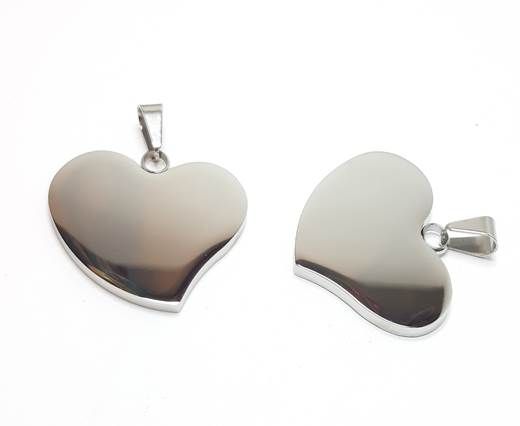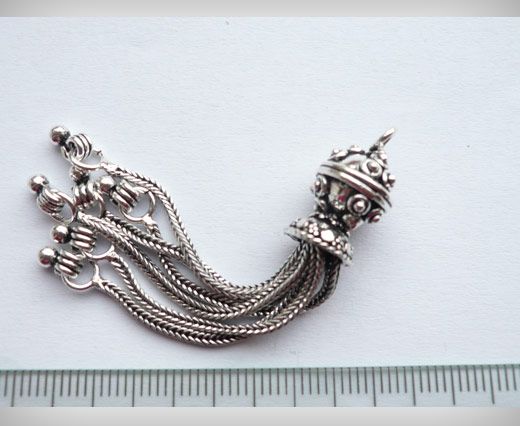Materials for Jewelry Making
Materials for Jewelry Making
Jewelry-making is both an art and a science. Choosing the right material is crucial for creating pieces that are not only beautiful but also durable. Whether you are a craft enthusiast, a jewelry maker, or a small business owner, understanding the best materials for jewelry making can elevate your creations.
In this blog post, we'll explore the key materials used in jewelry making—stainless steel, sterling silver, and gold—and understand why 925 and 316 are important. We'll also look into which material is best for engraving, especially for branding purposes.
The Art and Science of Jewelry Making
Creating jewelry is more than just assembling pieces; it's about understanding the properties of materials and how they interact. This knowledge allows you to craft items that are aesthetically pleasing and structurally sound. For those new to jewelry making, the plethora of options can be overwhelming. However, knowing the strengths and weaknesses of each material can make your decision-making process much easier.
By the end of this post, you will have a clearer understanding of the best materials for jewelry making and how to choose the right one for your needs.
The Importance of Choosing the Right Material for Jewelry
Choosing the right material for your jewelry is essential for several reasons. Firstly, it impacts the durability of your pieces. Materials like stainless steel and gold are known for their strength and longevity, making them excellent choices for everyday wear.
Secondly, the material you select affects the aesthetic appeal. Sterling silver, for example, offers a classic, timeless look that many find appealing. On the other hand, gold exudes luxury and sophistication, making it a sought-after choice for formal occasions.
Lastly, your choice of material can influence the pricing of your jewelry. Stainless steel is affordable and accessible, making it ideal for those who want stylish pieces without breaking the bank. Gold, while more expensive, allows for higher retail prices and attracts a different market segment.
Stainless Steel: Durable and Affordable

stainless steel pendants sun enterprises
Stainless steel has gained popularity in the jewelry-making industry for a variety of reasons. Its durability makes it resistant to scratches and tarnish, ensuring that your pieces remain looking new for a long time. This makes it an excellent option for everyday wear.
Additionally, stainless steel is hypoallergenic, which is crucial for people with sensitive skin. Its affordability also makes it an attractive option for both jewelers and customers. Despite its lower cost, stainless steel offers a high-quality look and feel, making it a versatile material for various types of jewelry.
Stainless steel is also highly customizable. Whether you want a polished finish or a matte look, this material can accommodate your preferences. Its adaptability makes it suitable for different styles, from modern minimalist designs to more intricate, detailed pieces.
Sterling Silver: A Classic Choice and Understanding 925

sterling silver beads sun enterprises
Sterling silver has been a staple in jewelry making for centuries. Known for its lustrous shine, it offers a classic, timeless appeal that never goes out of style. Sterling silver is composed of 92.5% pure silver and 7.5% other metals, usually copper, which gives it added strength. This composition is often referred to as "925 silver."
One of the main advantages of sterling silver is its versatility. It can be used to create a wide range of jewelry styles, from simple rings to elaborate necklaces. Sterling silver is also relatively easy to work with, making it a favorite among both novice and experienced jewelers.
However, sterling silver does require some care to maintain its appearance. It can tarnish over time, especially when exposed to air and moisture. Regular cleaning and proper storage can help keep your sterling silver pieces looking their best.
Gold: The Ultimate in Luxury and Branding with Engraving
Gold is synonymous with luxury and wealth. It has been used in jewelry making for thousands of years and continues to be a favorite choice for high-end pieces. Gold is available in various karats, with 24k being pure gold. However, pure gold is too soft for everyday wear, so it is often alloyed with other metals to increase its strength.
One of the significant benefits of gold is its resistance to tarnish and corrosion. This makes it ideal for pieces that you want to last a lifetime. Gold also comes in different colors, including yellow, white, and rose, offering versatility in design.
Gold is particularly well-suited for branding through engraving. Its softness makes it easier to engrave detailed logos or messages, adding a personal touch to your pieces. Engraving on gold can elevate the perceived value of your jewelry, making it even more appealing to customers.
Which Material is Best for Engraving on Jewelry for Branding?
When it comes to engraving for branding purposes, not all materials are created equal. Gold is often considered the best material for engraving due to its softness and ability to hold fine details. This makes it ideal for creating intricate logos or personalized messages.
Sterling silver is another good option for engraving. While it is harder than gold, it still allows for detailed engravings. The bright, reflective surface of sterling silver can make engraved designs stand out beautifully.
Stainless steel, while highly durable, can be more challenging to engrave. However, modern laser engraving techniques have made it possible to achieve precise, detailed designs on stainless steel. If you are looking for a durable, affordable option, stainless steel can still be a viable choice for engraving.
Sun Enterprises Engraving Services
Sun Enterprises is proud to offer professional engraving services tailored for all types of jewelry materials. Whether it's gold, sterling silver, or stainless steel, our skilled artisans employ advanced techniques to deliver precise and intricate engravings. We understand the importance of personalization and branding, allowing you to add a unique touch to your jewelry pieces. With a focus on quality and attention to detail, Sun Enterprises ensures that each engraving not only enhances the aesthetic appeal of your jewelry but also elevates its significance, making it a cherished keepsake for years to come.
Conclusion: Making Informed Material Choices for Your Jewelry
Choosing the right material for your jewelry is a crucial decision that can impact the durability, appearance, and overall success of your creations. Whether you opt for the durability and affordability of stainless steel, the classic appeal of sterling silver, or the luxury of gold, understanding the properties of each material will help you make informed choices.
For those looking to add a personal touch to their pieces through engraving, gold and sterling silver are excellent choices for their ability to hold fine details. Stainless steel, while more challenging to engrave, offers durability and affordability that can be appealing for everyday wear.
By making informed material choices, you can create high-quality, lasting jewelry that appeals to a wide range of customers. If you are ready to elevate your jewelry-making skills and produce stunning pieces, start experimenting with these materials today.












































